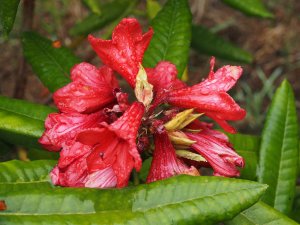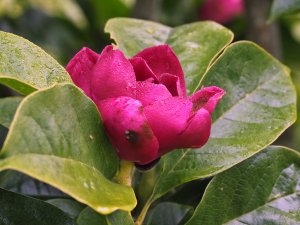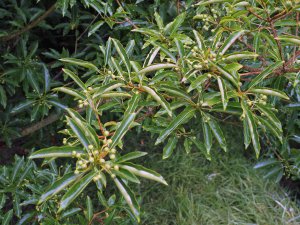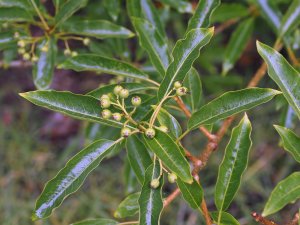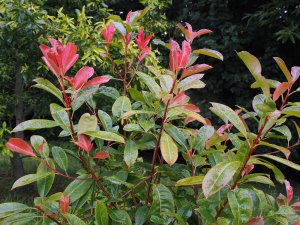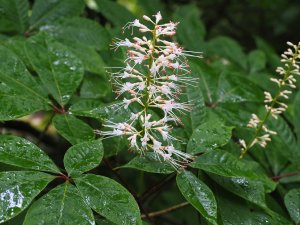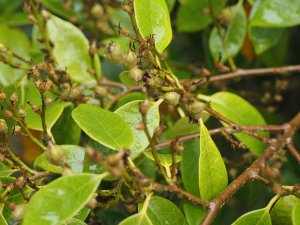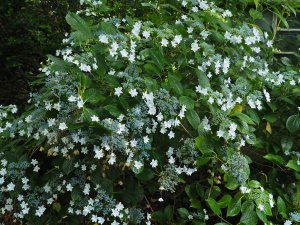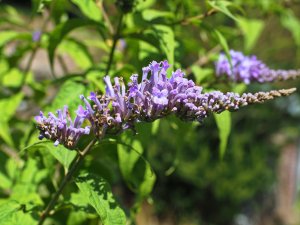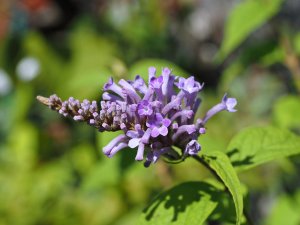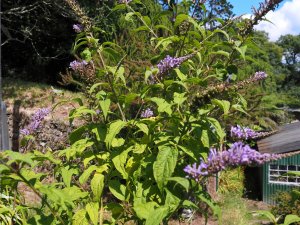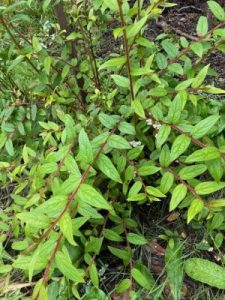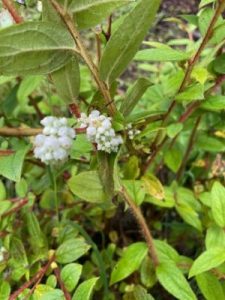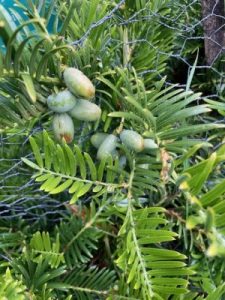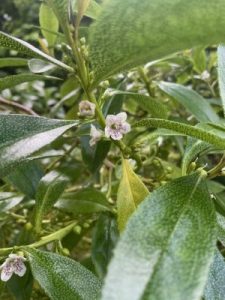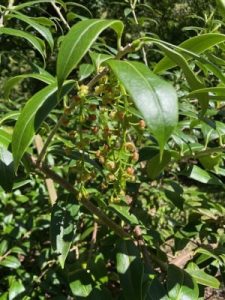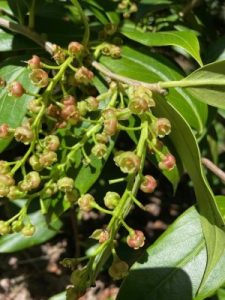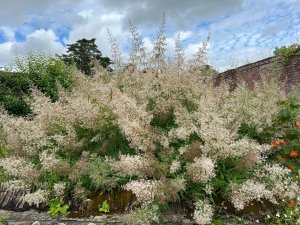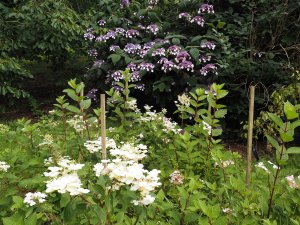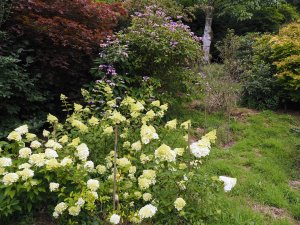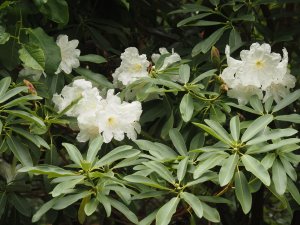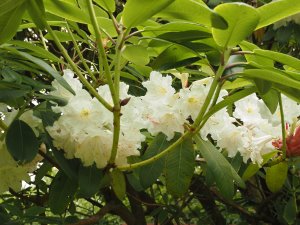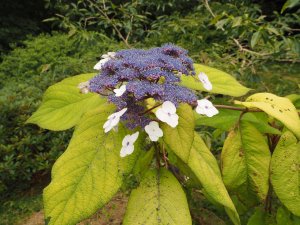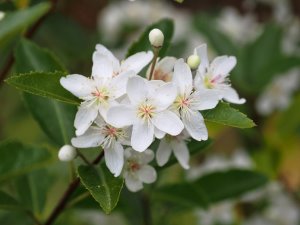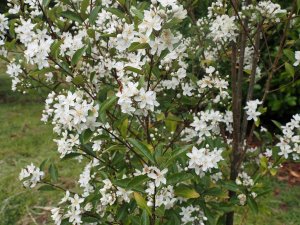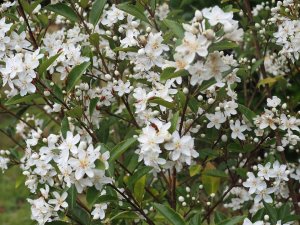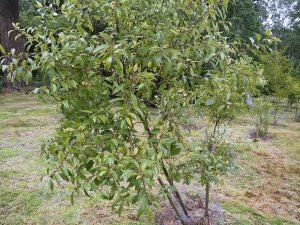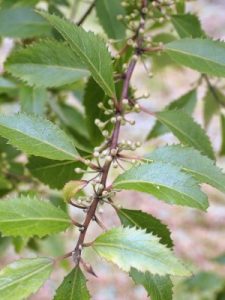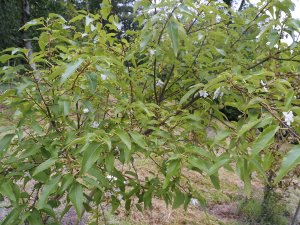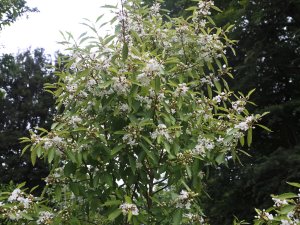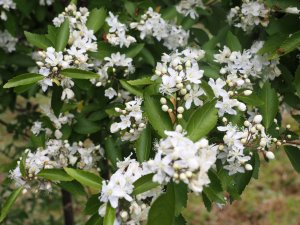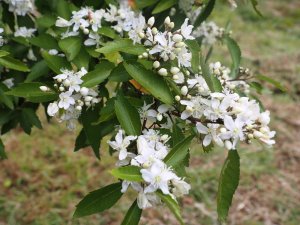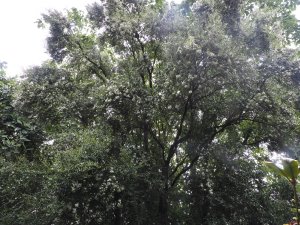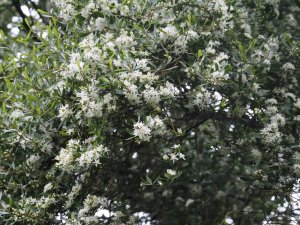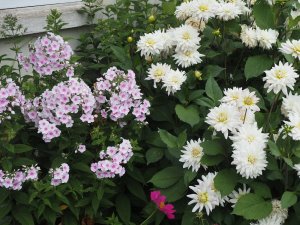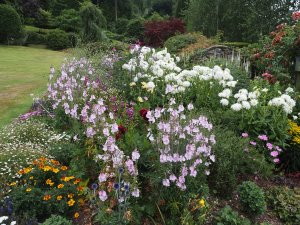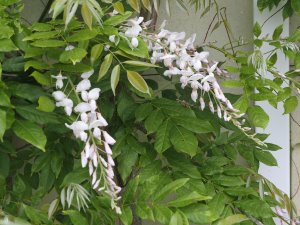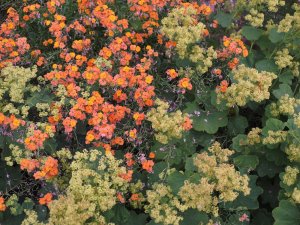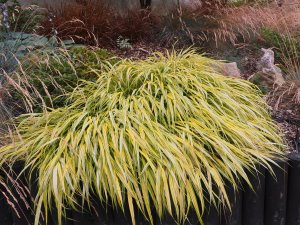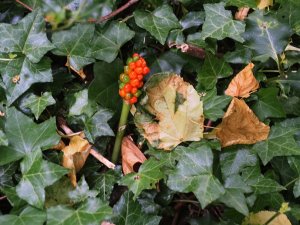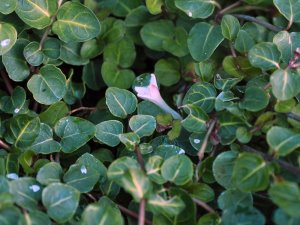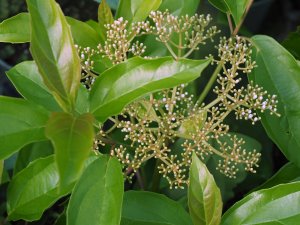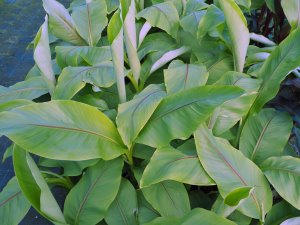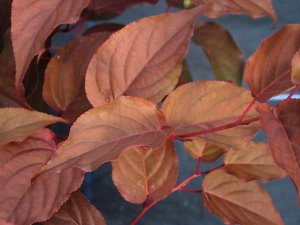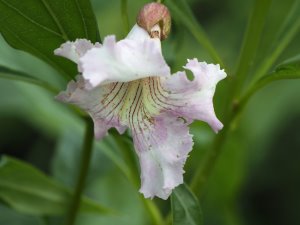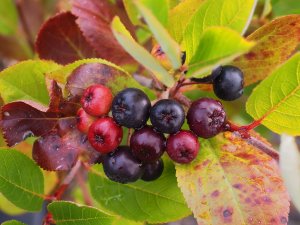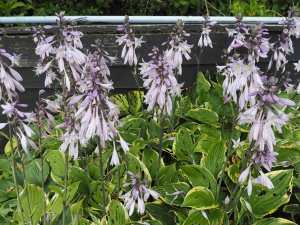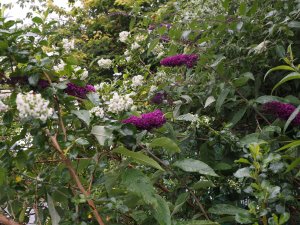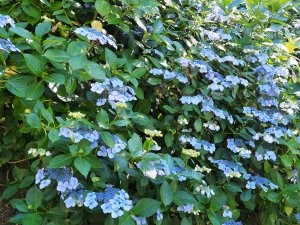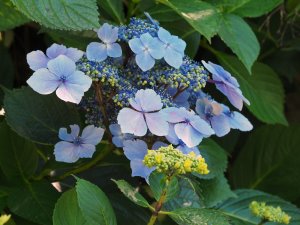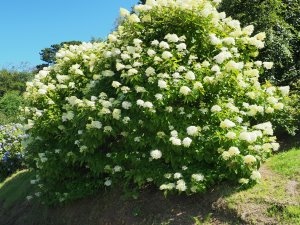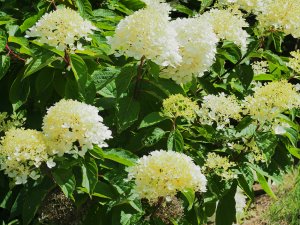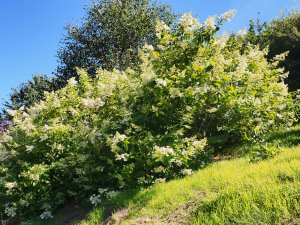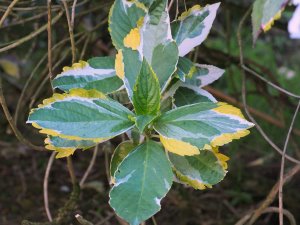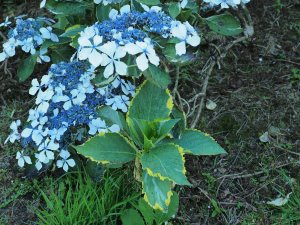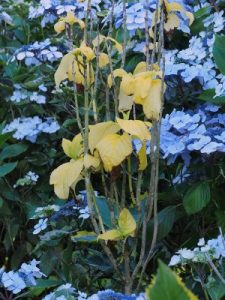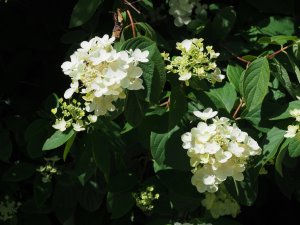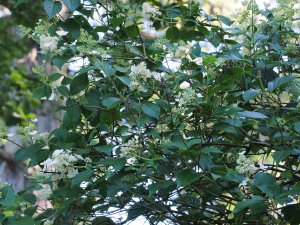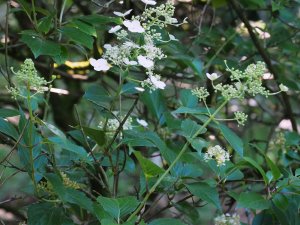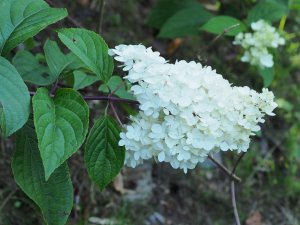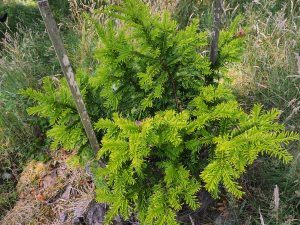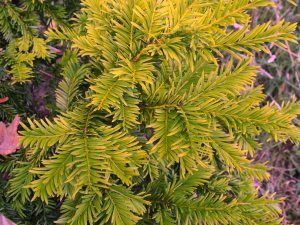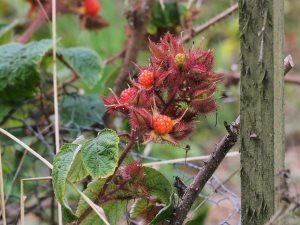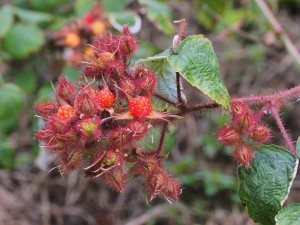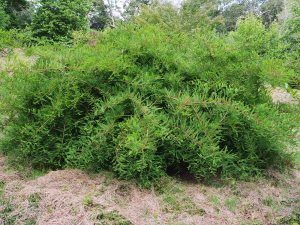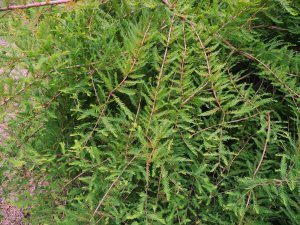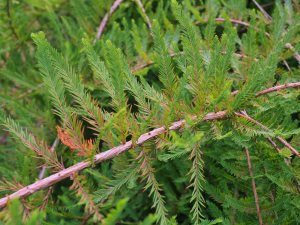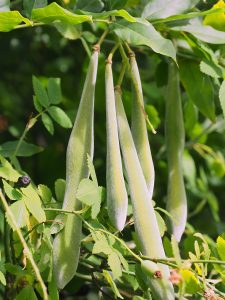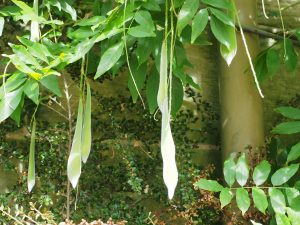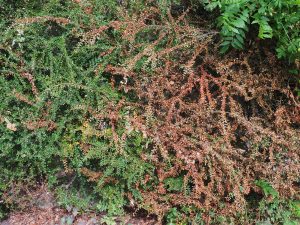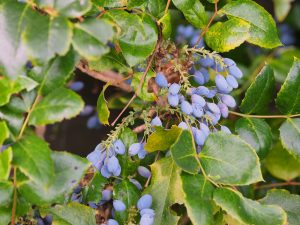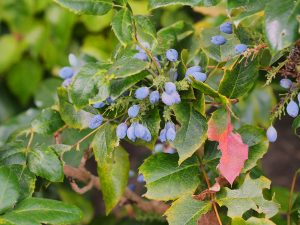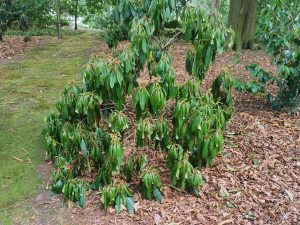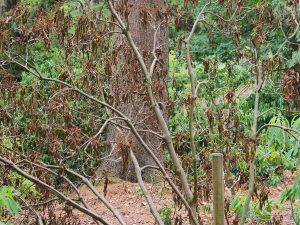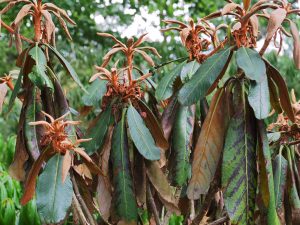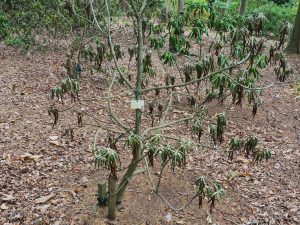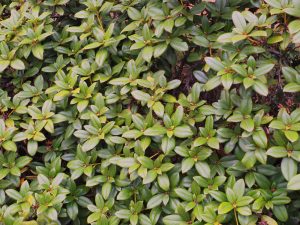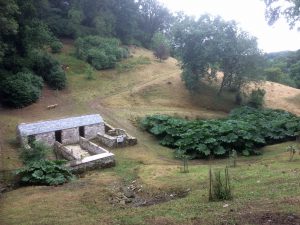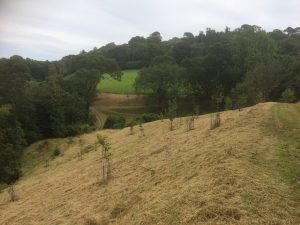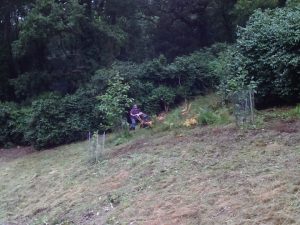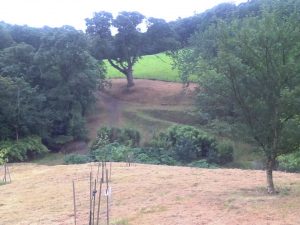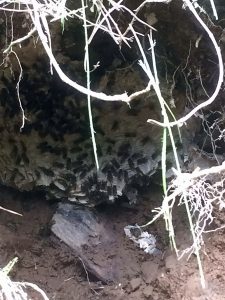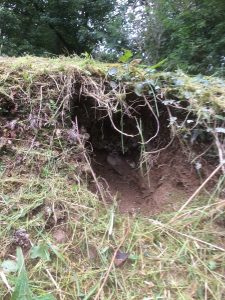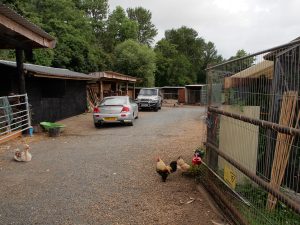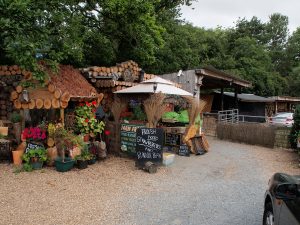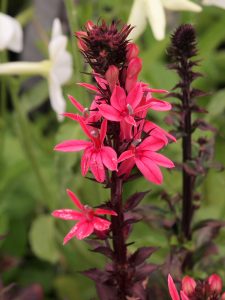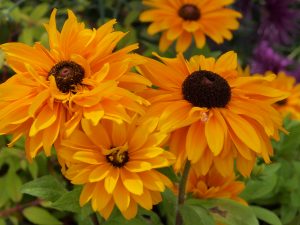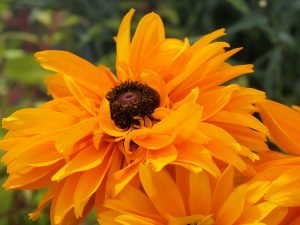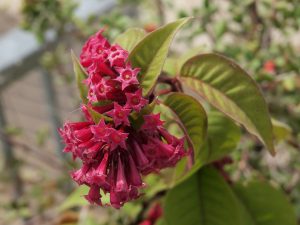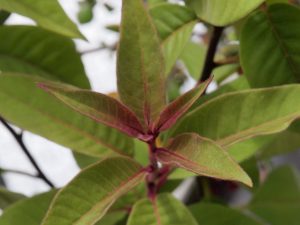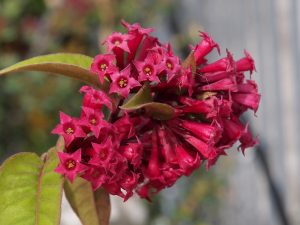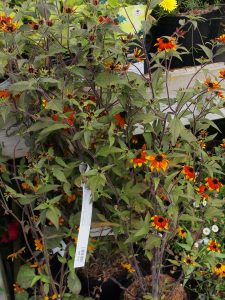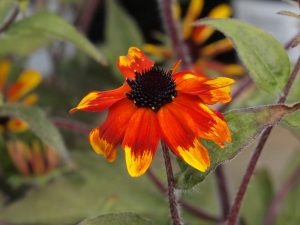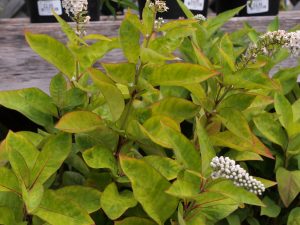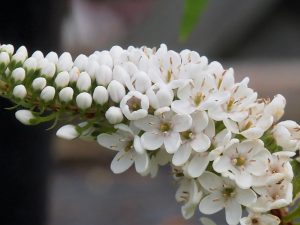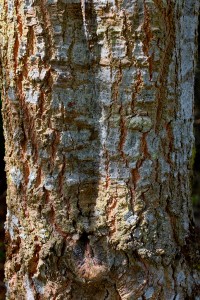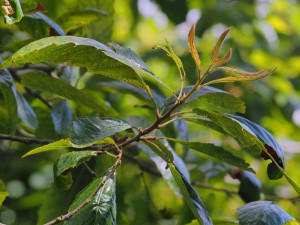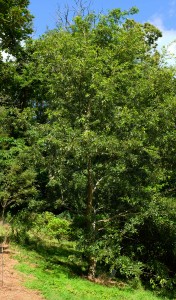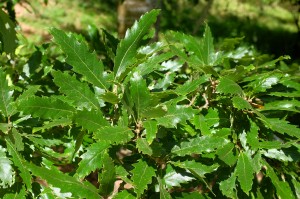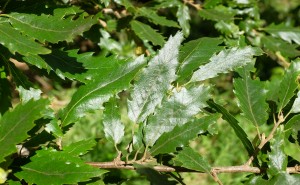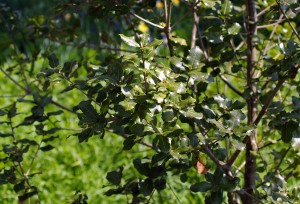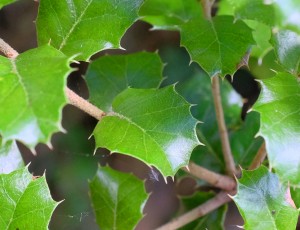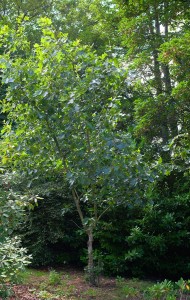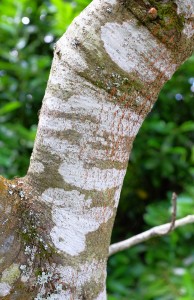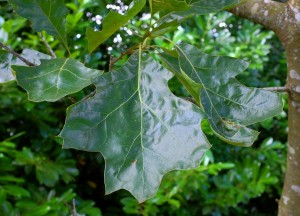2025 – CHW
Photinia beauverdiana var. notabilis with fissures in its trunk.
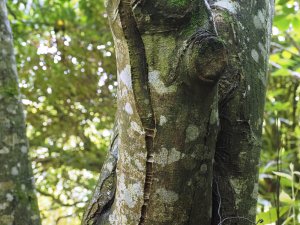
Very heavy rain here last Saturday while still in the Isle of Wight. All good news! First flowers on Gaultheria wardii (KR 11274) which was brough at the 2022 Tregrehan Plant Fair and planted near Rookery Path.
An inspection of the Hoheria species and varieties today. Hoheria sexstylosa ‘Pendula’ and Hoheria populnea flower here in September but forms of H. sexstylosa are out already. Made a decent video for the Burncoose website.Hoheria sexstylosa ‘Stardust’ – upright habit and very floriferous.
2022 – CHW
Visited a garden near Sidbury today with a view to putting together a planting plan for a newly cleared woodland garden area.
A superb Berberidopsis corallina trained on a back wall of the house.
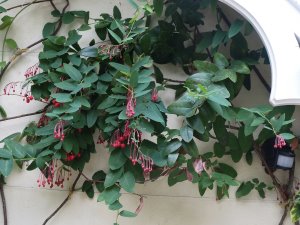
The siege of the film crew making part of yet another film from one of Rosamunde Pilcher’s books for the German TV market is thankfully now over. During the week they have filmed a burial at the church, turned the tearooms into a prison and done heaven knows what in the library and drawing room. I guess about 100 people at times including the crowd extras for the funeral and the stewards/caterers etc. The church will get a decent income in a year when fundraising has been impossible until recently but the stipend still supposedly has to be paid (about £80 per head for each of 75 parishioners). The excellent part time vicar’s contract may be up shortly or so we all fear. The diocese and bishop demand the money for their ever expanding bureaucracy while the parishes still have to pay in a lockdown year.A few interesting things in the nursery today as we prepare for tonight’s gales.I do not know that I have ever seen a flower on Mitchella repens before but I have seen its ‘Partridge Berries’.
An old clump of Hydrangea ‘Blue Wave’ on the drive.
A young Taxus baccata ‘Aurea’ with particularly fine new growth in the shade on Sinogrande Walk. Quite a bit of tidying up to do along here this winter to tree conifers encroaching laurels and a large set of regrowth from an old oak stump getting in the way.
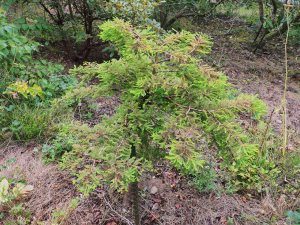
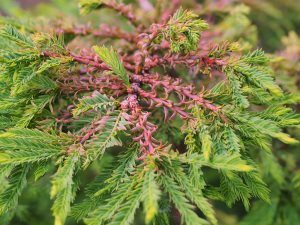
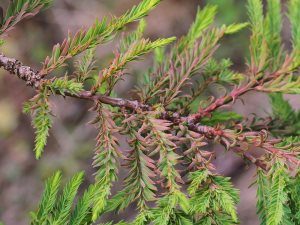
2018 – CHW
A trip to Manley Cottage in Cheshire (to see Lizzie’s mum who is 94) at the weekend as the drought ends but not soon enough to see the end results there:
Wisteria setting runner bean-like seeds. I do not think I have ever seen this in Cornwall, very seldom elsewhere and never in such profusion.
Jaimie has sent me pictures of the new machine’s performance in cutting Old Park. It all looks very tidy and well ahead of our normal schedule which is great. The gunnera bed is at its zenith too.
A shambolic 1960s style farm shop right beside a tourist trap called ‘Oasis’ selling tourist ‘tat’. The shop is run by an elderly couple with no till and a lack of hygiene regulations which would drive the EU and supermarkets absolutely mad. Self-butchered boar and delicious scotch eggs, crab in punnets with a ‘sell by’ label handwritten and stuck on as you buy. An absolutely perfect food hut pictured here with free range livestock. This is what smallholder farming used to be!
A few more novelties to consider as we buy a few plants for the Backstay garden.Lobelia ‘Fan Salmon’ is a pleasant pink with dark brown leaves like the popular Lobelia ‘Queen Victoria’.
Now on to the happy task of selecting the Caerhays order of rare plants from Crug Farm for delivery in February 2017.
2015 – CHW
Mark Bulk’s (Boskoop, Holland) availability list (for once with prices) arrives to peruse. Quite a few odd, rare and new things to purchase for the new 2016 Burncoose catalogue based on new ‘stuff’ growing well here already. Strangely JCW did often use the word ‘stuff’ to describe his plants. A rare aberration from the then protocol.
Chordospartium stevensonii (coastal plant seen at Ventnor)Carriera calycina (original plant here from Penrice Castle)
Cornus kousa ‘Xanthocarpa’ (yellow fruits – very rare)
Deutzia pulchra (wild collected and given to us originally by Roy Lancaster)
Forsythia mandschurica (no idea but dwarf?)
Hydrangea serratifolia (as at Tregothnan – climber)
Polyspora axillaris (see early February for pictures)
Torreya nuncifera (endangered in the wild)
I end up ordering lots for Caerhays and Burncoose gardens and will leave Clare to do the serious catalogue stuff. Quite fun spending a little (£5,000) of the Burncoose spring profits! Easy to get carried away by my personal preferences and then a bollocking no doubt from Andrew, the nursery manager, for increasing our stock too much.Then on to photograph oaks planted in Penvergate (Forty Acres Wood) and Giddle Orchard (Old Park Wood) since 1997. Time is so limited apart from July and August to actually look at what has been as prolific and extensive a planting programme as the garden as ever seen since 1910 to 1930. Many failures and losses. The further you go from Castle Wood the less maintenance and care has been undertaken and the greater the losses. Still we did find a few successes for the next 50 plus years to enjoy!
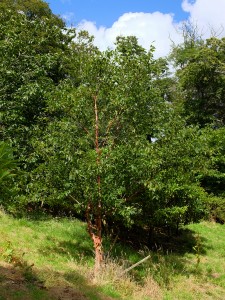
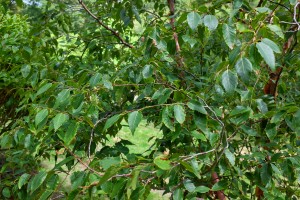
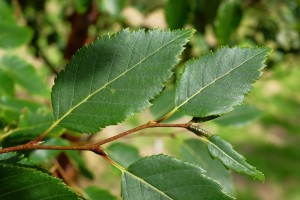
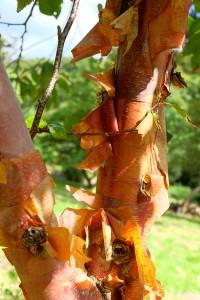
1989 – FJW
A little rain is falling. We need a great deal – last proper rain June 3rd.
1965 – FJW
First Young Farmers Rally. Lost 1 pair of trousers and a parrot. A wet year – hay difficult – new growth on plants very marked.
1929 – JCW
Hybrids of Ungernii, Decorum and Discolor x Auriculatum are very good, Rosa Brunonis and American Pillar are very and so is the Romneya. One or two Eriogynum have flowers now. Mag delavayi a lot of flowers.
1917 – JCW
Buddleias are good now there is very little else. The Gros au Felicity rose has been very good since May, but wants food.
1916 – JCW
Much as above. Plagianthus begins to go yellow in the leaf, flowers good yet.
1910 – JCW
The buddleias are just starting. Mitraria are good. Ferns by the mitrarias good. Honeysuckles good, not much else, an odd lapageria and so cyclamen.




